Define Our Future
01 March 2024
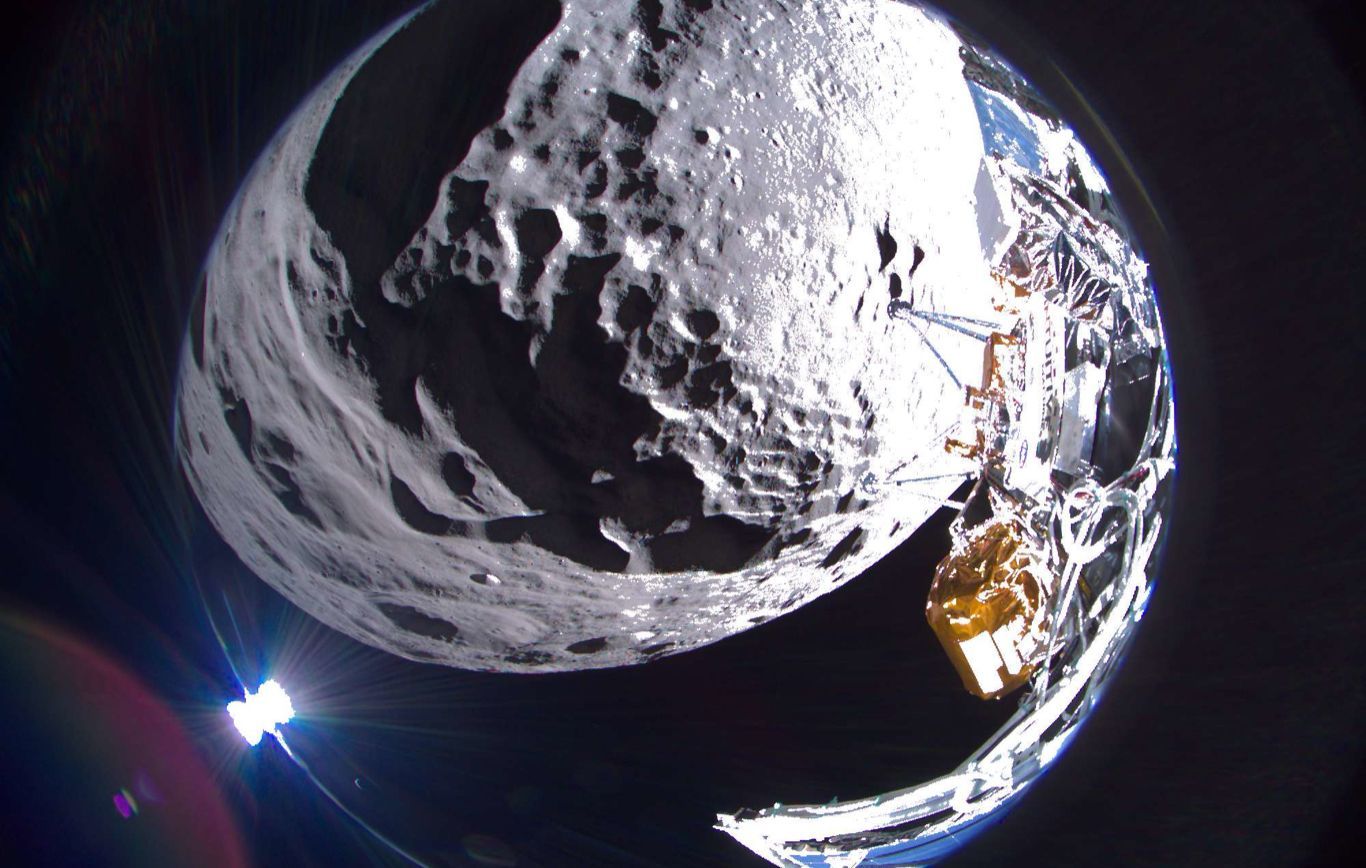
Image from IM-1 decent to the Moon (Intuitive Machines)
As the Intuitive Machines lunar mission draws to a close (for now?), both them and NASA have declared it an “unqualified success”. The Nova-C lander, named “Odysseus”, became the first commercial vehicle to perform a soft landing on the Moon on Thursday, February 11th, raising the curtain on a new era for the lunar economy. In proving the viability of cost-effective private partnerships, Intuitive Machines have set the stage for a growing cadence of commercial lunar missions in the near and long-term future.
NASA contracted the startup under their Commercial Lunar Payloads Services (CLPS) programme, with them paying only $118mn, and announced that they were receiving data from five of their payloads, with a sixth to be activated in the coming months. Furthermore, partnerships under CLPS are playing a key role in overall NASA Artemis programme, eventually returning hums to the Moon and establishing a permanent lunar base.
The mission though wasn’t without its faults. A last-minute glitch caused the lander to descend quicker than they anticipated, forcing it to land sideways, which in-turn reduced its capacity for communications and solar-charging. According to Intuitive Machines, the fault was down to human error, with a safety switch being left unlocked before launch.
Nonetheless, the mission represents a first and a turning point for New Space, with President Biden calling it a "a thrilling step forward in a new era of space exploration.” As well being largely a technical success, helping pave the way for two more IM missions planned for this year, it has gone on to awaken imaginations about the possibilities through New Space, and put the spotlight on the pace and direction the sector is taken through commercialisation. Eyes may now be more focussed on a space industry that it set to be worth $1 trillion by 2030.
And it may not be the end for Odysseus. Although it is not designed to withstand the extreme cold temperatures of the lunar night, engineers will attempt to again make contact when daytime emerges in two weeks.
JAXA lander unexpectedly wakes-up after lunar night
Unexpectedly, the Japanese space agency (JAXA) managed to regain contact with their SLIM lander last Sunday, despite the vehicle not being designed in order to withstand lunar nighttime. Although communication was terminated shortly afterwards, the agency is now looking to employ multi-band spectroscopic camera (MBC), used to analyse the makeup of the lunar surface.
SLIM, or Smart Lander for Investigating Moon, was in-part designed to demonstrate precise landing technology, with the aim of landing within 100 metres of its intended landing zone, rather than previous landers whose landing zones have spanned several kilometres. JAXA achieved a landing within just 55 metres, but did experience experience failure of one of its main engines, resulting in SLIM landing on its nose. They did though also find success with their two rovers LEV-1 and LEV-2, with the latter, a small spherical rover, taking a photo of the lander and sending back to Earth via LEV-2, using inter-robot radio wave data transmission.
Despite encountering some issues, both the SLIM and IM-1 missions have demonstrated new and innovate technologies and models for lunar exploration.
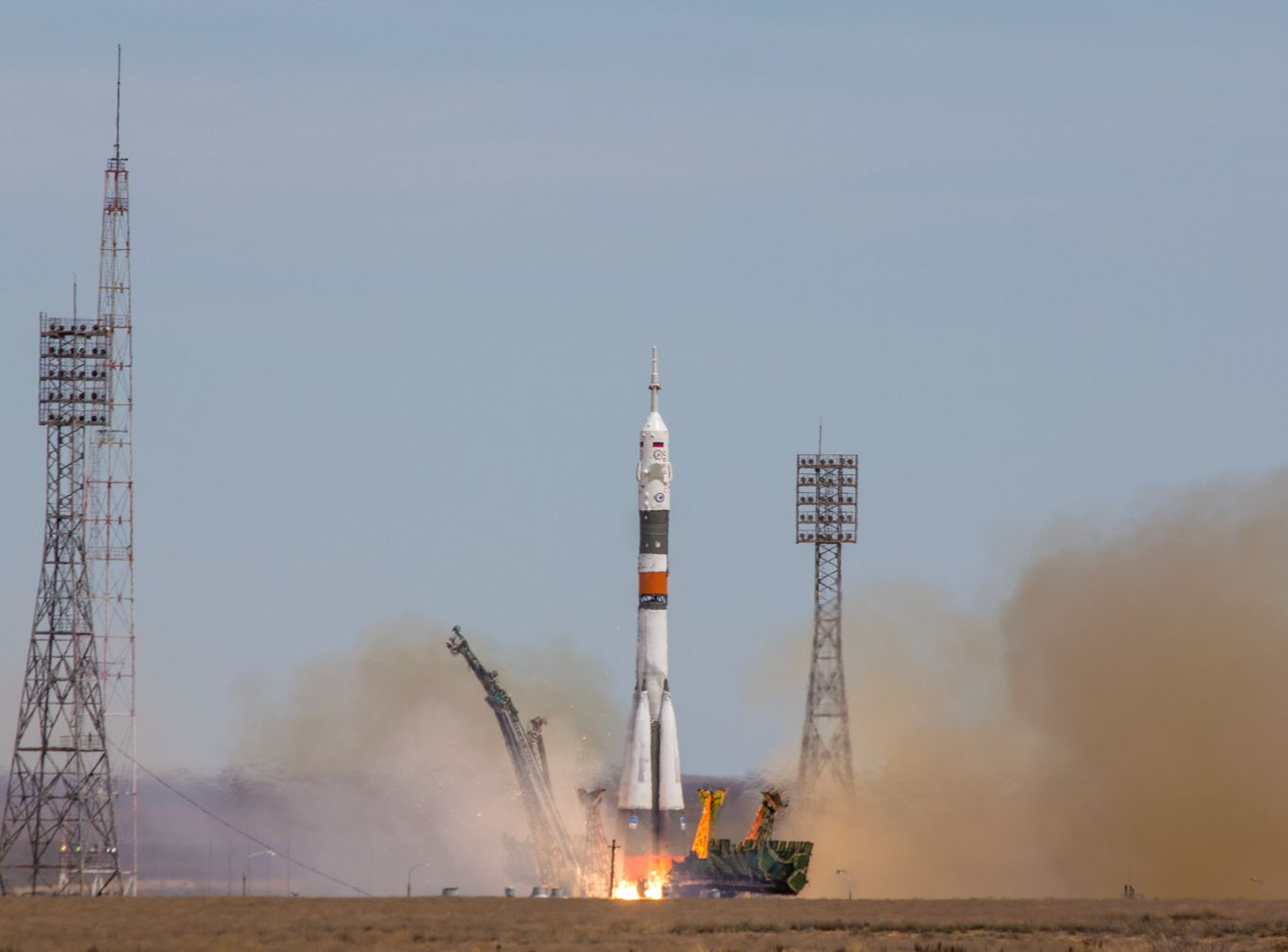
Roscosmos selling-off assets (Image - Adobe)
Putin again rejects weapons claims, China aim to play mediator role while facing coercion accusations
Matters continue to unfold relating to the White House announcement on February 15th that they believe Russia are developing anti-satellite capabilities (ASAT), with some reporting that it may be nuclear-powered, but with full intelligence details yet to be released. Vladimir Putin rejected this accusation, and while speaking at campaign speech on Thursday, he again rebuffed the claims as “some kind of nonsense”.
Putin also demonstrated a visible correlation now being formed between matters of space and geopolitics, stating that while the US and the west support Russian defeat in Ukraine, Russia is unable to engage in discussions on space strategy.
Similarly, the Ukraine war is still seemingly having a continuing degrading effect on Russian space capabilities, with Roscosmos this week announcing they are selling-off non-core assets, after reeling from a loss of 80% of its export income due to western sanctions and loss of international partners.
These warnings and accusations also come at a time when interest is only growing in the booming the new space economy, especially with the light cast from the recent IM, SLIM and Chandrayaan (Indian) missions, and more value being placed on national space strategies.
China again aim to mediate in Ukraine, but will space rivalry dilute impartiality?
Baring this in mind, China has again declared its intention to mediate in Ukraine, with Foreign Ministry Spokesperson Mao Ning saying “Li Hui, the Chinese government’s special representative for Eurasian affairs, will visit Russia, the EU headquarters, Poland, Ukraine, Germany and France starting from March 2 to conduct a second round of shuttle diplomacy to promote a political solution” to the crisis.
China previously detailed a 12-point plan on the ‘Political Settlement of the Ukraine Crisis’, which included ‘respecting the sovereignty of all countries’, ‘ceasing hostilities’ and ‘abandoning the Cold War mentality’. The latter point seems quite apt in the backdrop of accusations from the US regarding potential Russian space-based nuclear weapons. It may then seem plausible that China could be one of the only players who could have the political weight to referee and ending to the war.
However, other than heightened US-China geopolitical and economic tensions, an article from the Washington Times this week highlighted a report from the China Aerospace Studies Institute, revealing that “Chinese military planners consider space weapons easier to use than nuclear weapons and think space weapons could more effectively bully the United States.”
Additionally, speaking before the Senate Armed Services Committee, Gen. Stephen Whiting, commander of U.S. Space Command, has this week warned of a “window of vulnerability” in the coming years to defend space infrastructure from aggressors. Namely, the general said “The PRC’s and Russia’s actions have transformed space into a contested warfighting domain.” Whiting also noted the rapidly goring Chinese intelligence satellite capability, saying they have more than tripled that presence in orbit since 2018.
While China aim to use its role and influence to mediate in Ukraine, it seems that tensions only continue to grow between the US and China in space.

ISS remains a beacon of US-China cooperation (Image - Adobe)
Opinion: Space could lead by example, rather than be the new front of warfare
It seems therefore now almost impossible for geopolitics of Earth and space to be treated separately. Moreover, space is playing an increasingly prominent role in matters of conflict and national defence strategy, with commercial entities such as SpaceX’s Starlink playing an active role in global conflicts.
Only this week a group of US lawmakers accused SpaceX of withholding use of its Starshield defence satellite constellation for US forces in Taiwan, with Musk’s close ties to the PRC being questioned. Whether that be the case or not, what this does demonstrate is the growing reliance that the US, and others such as in Ukraine, have on commercial entities such as SpaceX.
The value of space is rapidly growing, for commercial application and also defence, as seen this week in the flurry of excitement surrounding the IM-1 mission, and the warnings and skepticism regarding a potential arms race in orbit.
While it may seem that a conflict in space may seem to come extent inevitable, there is also the possibility that space exploration offers the chance to build bridges through cooperative missions, such as the ongoing US-Russian partnership on ISS and the Chinese-ESA partnership on the Chang’e-6 lunar mission.
Based on the principles of peaceful uses of outer space, enshrined in the Outer Space Treaty, cooperation in space has the chance to lead by example.
Define Our Future
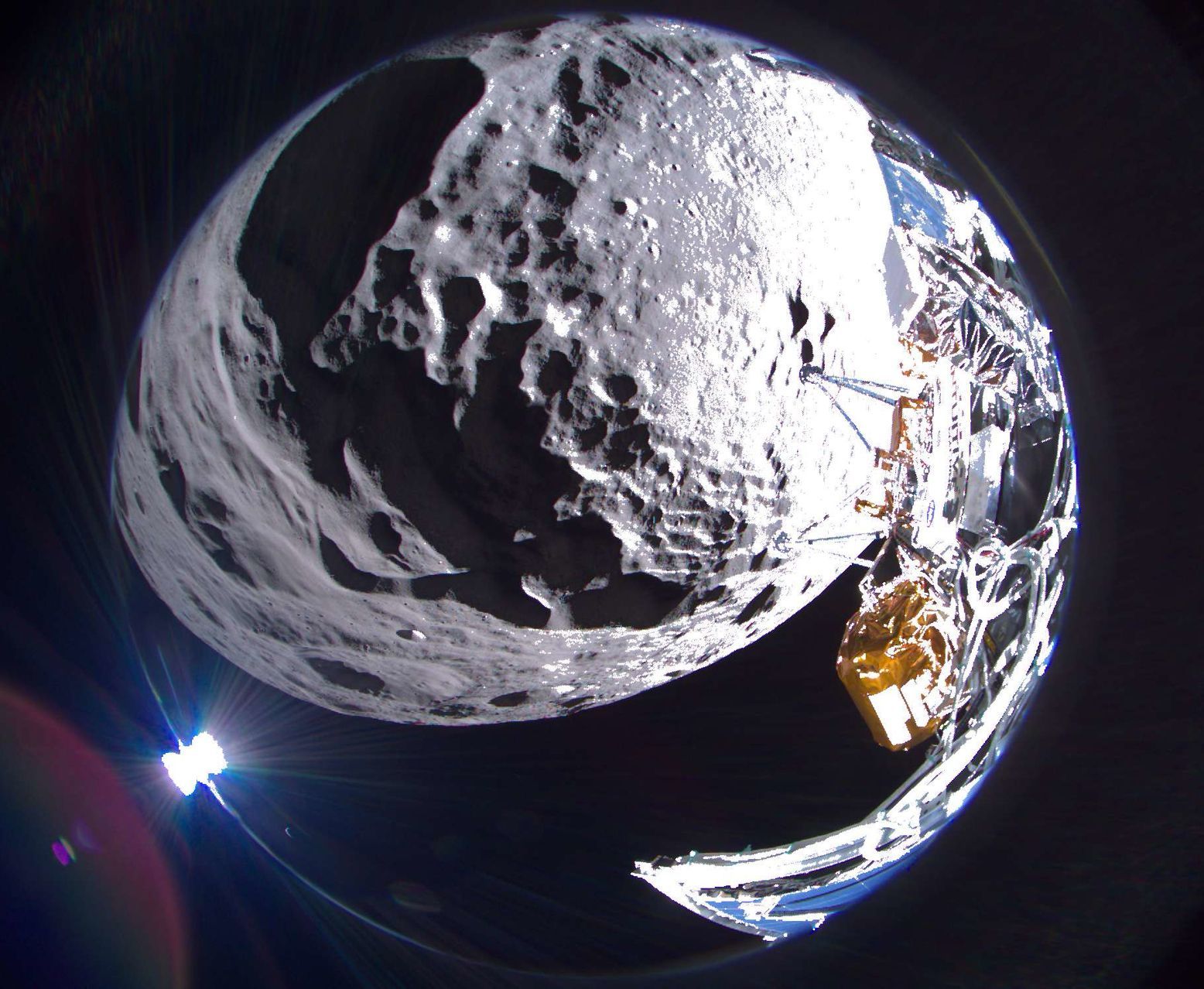
Image from IM-1 decent to the Moon (Intuitive Machines)
01 March 2024
IM-1 mission awakens curiosities of New Space, JAXA lander wakes-up, China accused of space weapons - Space News Roundup
As the Intuitive Machines lunar mission draws to a close (for now?), both them and NASA have declared it an “unqualified success”. The Nova-C lander, named “Odysseus”, became the first commercial vehicle to perform a soft landing on the Moon on Thursday, February 11th, raising the curtain on a new era for the lunar economy. In proving the viability of cost-effective private partnerships, Intuitive Machines have set the stage for a growing cadence of commercial lunar missions in the near and long-term future.
NASA contracted the startup under their Commercial Lunar Payloads Services (CLPS) programme, with them paying only $118mn, and announced that they were receiving data from five of their payloads, with a sixth to be activated in the coming months. Furthermore, partnerships under CLPS are playing a key role in overall NASA Artemis programme, eventually returning hums to the Moon and establishing a permanent lunar base.
The mission though wasn’t without its faults. A last-minute glitch caused the lander to descend quicker than they anticipated, forcing it to land sideways, which in-turn reduced its capacity for communications and solar-charging. According to Intuitive Machines, the fault was down to human error, with a safety switch being left unlocked before launch.
Nonetheless, the mission represents a first and a turning point for New Space, with President Biden calling it a "a thrilling step forward in a new era of space exploration.” As well being largely a technical success, helping pave the way for two more IM missions planned for this year, it has gone on to awaken imaginations about the possibilities through New Space, and put the spotlight on the pace and direction the sector is taken through commercialisation. Eyes may now be more focussed on a space industry that it set to be worth $1 trillion by 2030.
And it may not be the end for Odysseus. Although it is not designed to withstand the extreme cold temperatures of the lunar night, engineers will attempt to again make contact when daytime emerges in two weeks.
JAXA lander unexpectedly wakes-up after lunar night
Unexpectedly, the Japanese space agency (JAXA) managed to regain contact with their SLIM lander last Sunday, despite the vehicle not being designed in order to withstand lunar nighttime. Although communication was terminated shortly afterwards, the agency is now looking to employ multi-band spectroscopic camera (MBC), used to analyse the makeup of the lunar surface.
SLIM, or Smart Lander for Investigating Moon, was in-part designed to demonstrate precise landing technology, with the aim of landing within 100 metres of its intended landing zone, rather than previous landers whose landing zones have spanned several kilometres. JAXA achieved a landing within just 55 metres, but did experience experience failure of one of its main engines, resulting in SLIM landing on its nose. They did though also find success with their two rovers LEV-1 and LEV-2, with the latter, a small spherical rover, taking a photo of the lander and sending back to Earth via LEV-2, using inter-robot radio wave data transmission.
Despite encountering some issues, both the SLIM and IM-1 missions have demonstrated new and innovate technologies and models for lunar exploration.
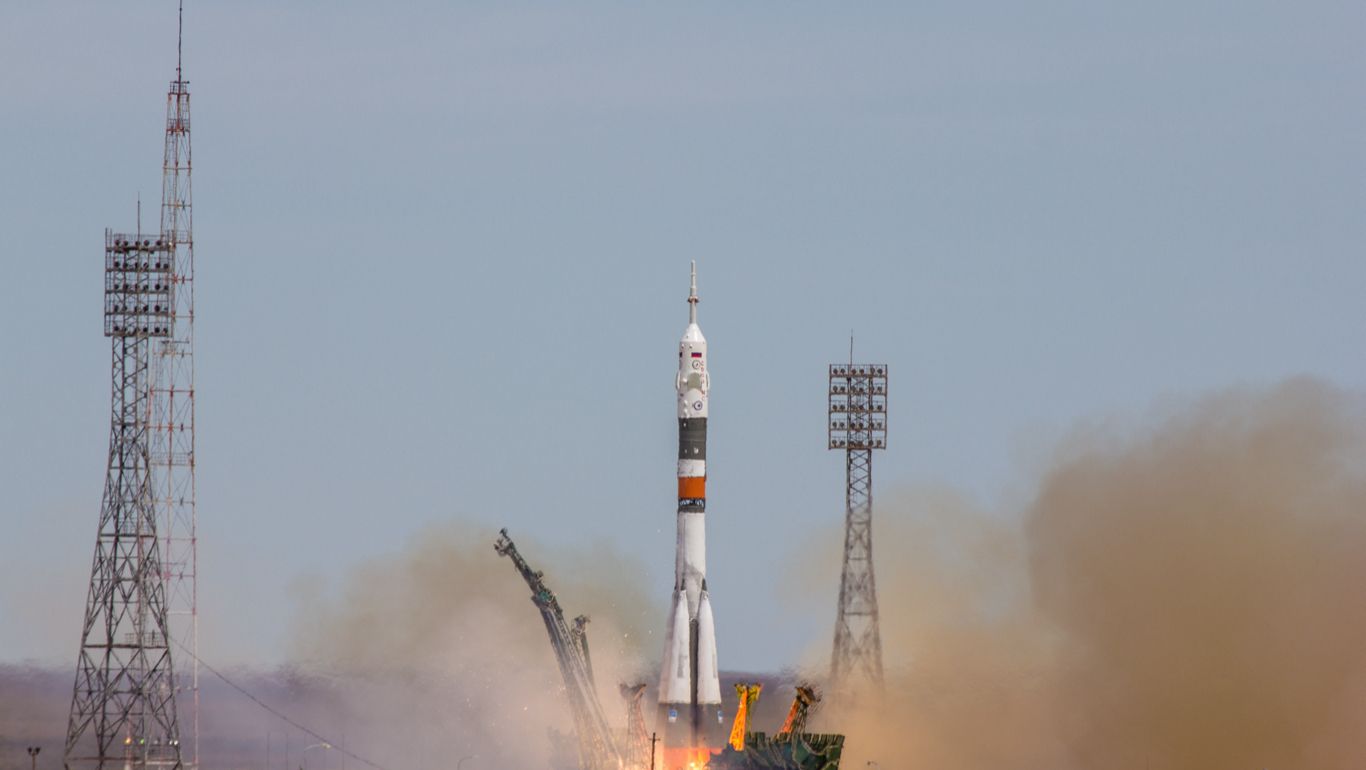
Roscosmos selling-off assets (Image - Adobe)
Putin again rejects weapons claims, China aim to play mediator role while facing coercion accusations
Matters continue to unfold relating to the White House announcement on February 15th that they believe Russia are developing anti-satellite capabilities (ASAT), with some reporting that it may be nuclear-powered, but with full intelligence details yet to be released. Vladimir Putin rejected this accusation, and while speaking at campaign speech on Thursday, he again rebuffed the claims as “some kind of nonsense”.
Putin also demonstrated a visible correlation now being formed between matters of space and geopolitics, stating that while the US and the west support Russian defeat in Ukraine, Russia is unable to engage in discussions on space strategy.
Similarly, the Ukraine war is still seemingly having a continuing degrading effect on Russian space capabilities, with Roscosmos this week announcing they are selling-off non-core assets, after reeling from a loss of 80% of its export income due to western sanctions and loss of international partners.
These warnings and accusations also come at a time when interest is only growing in the booming the new space economy, especially with the light cast from the recent IM, SLIM and Chandrayaan (Indian) missions, and more value being placed on national space strategies.
China again aim to mediate in Ukraine, but will space rivalry dilute impartiality?
Baring this in mind, China has again declared its intention to mediate in Ukraine, with Foreign Ministry Spokesperson Mao Ning saying “Li Hui, the Chinese government’s special representative for Eurasian affairs, will visit Russia, the EU headquarters, Poland, Ukraine, Germany and France starting from March 2 to conduct a second round of shuttle diplomacy to promote a political solution” to the crisis.
China previously detailed a 12-point plan on the ‘Political Settlement of the Ukraine Crisis’, which included ‘respecting the sovereignty of all countries’, ‘ceasing hostilities’ and ‘abandoning the Cold War mentality’. The latter point seems quite apt in the backdrop of accusations from the US regarding potential Russian space-based nuclear weapons. It may then seem plausible that China could be one of the only players who could have the political weight to referee and ending to the war.
However, other than heightened US-China geopolitical and economic tensions, an article from the Washington Times this week highlighted a report from the China Aerospace Studies Institute, revealing that “Chinese military planners consider space weapons easier to use than nuclear weapons and think space weapons could more effectively bully the United States.”
Additionally, speaking before the Senate Armed Services Committee, Gen. Stephen Whiting, commander of U.S. Space Command, has this week warned of a “window of vulnerability” in the coming years to defend space infrastructure from aggressors. Namely, the general said “The PRC’s and Russia’s actions have transformed space into a contested warfighting domain.” Whiting also noted the rapidly goring Chinese intelligence satellite capability, saying they have more than tripled that presence in orbit since 2018.
While China aim to use its role and influence to mediate in Ukraine, it seems that tensions only continue to grow between the US and China in space.
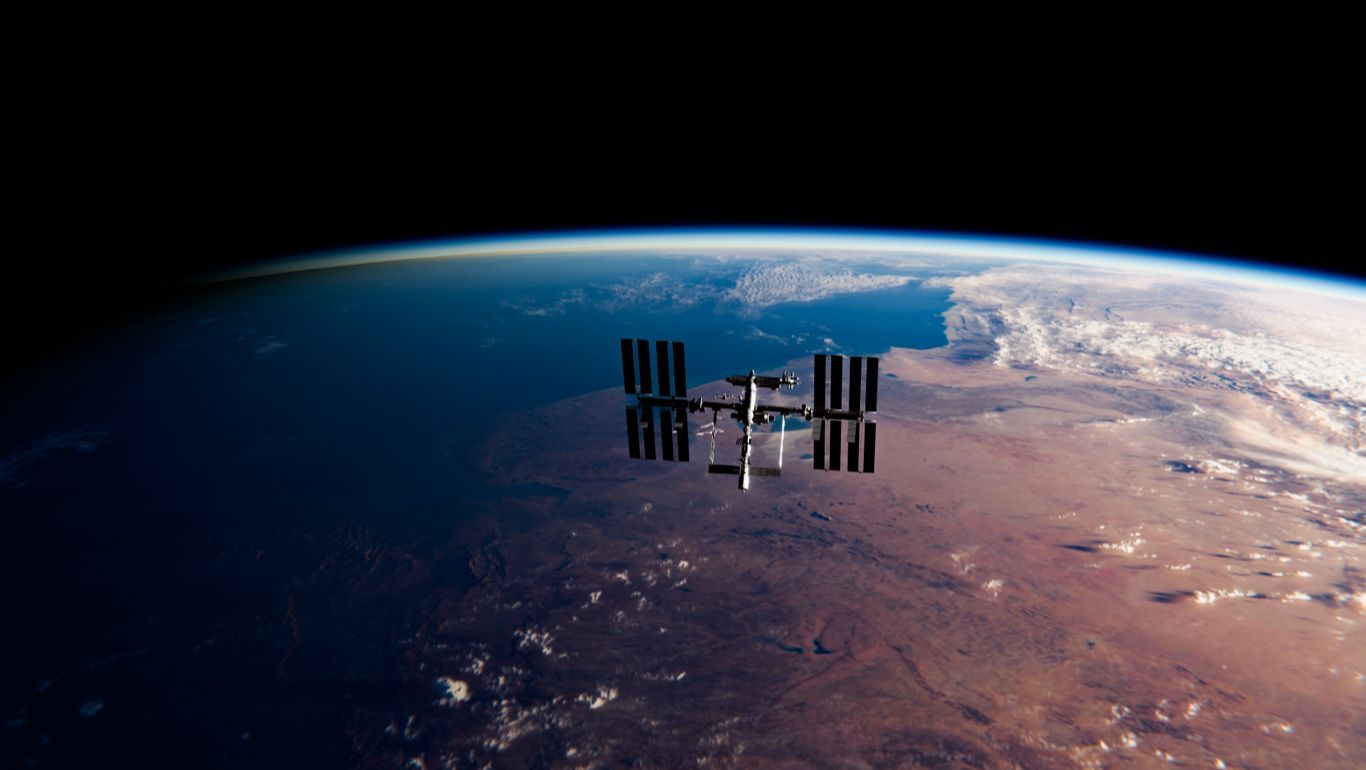
ISS remains a beacon of US-China cooperation (Image - Adobe)
Opinion: Space could lead by example, rather than be the new front of warfare
It seems therefore now almost impossible for geopolitics of Earth and space to be treated separately. Moreover, space is playing an increasingly prominent role in matters of conflict and national defence strategy, with commercial entities such as SpaceX’s Starlink playing an active role in global conflicts.
Only this week a group of US lawmakers accused SpaceX of withholding use of its Starshield defence satellite constellation for US forces in Taiwan, with Musk’s close ties to the PRC being questioned. Whether that be the case or not, what this does demonstrate is the growing reliance that the US, and others such as in Ukraine, have on commercial entities such as SpaceX.
The value of space is rapidly growing, for commercial application and also defence, as seen this week in the flurry of excitement surrounding the IM-1 mission, and the warnings and skepticism regarding a potential arms race in orbit.
While it may seem that a conflict in space may seem to come extent inevitable, there is also the possibility that space exploration offers the chance to build bridges through cooperative missions, such as the ongoing US-Russian partnership on ISS and the Chinese-ESA partnership on the Chang’e-6 lunar mission.
Based on the principles of peaceful uses of outer space, enshrined in the Outer Space Treaty, cooperation in space has the chance to lead by example.
Share this article
01 March 2024
IM-1 mission awakens curiosities of New Space, JAXA lander wakes-up, China accused of space weapons - Space News Roundup
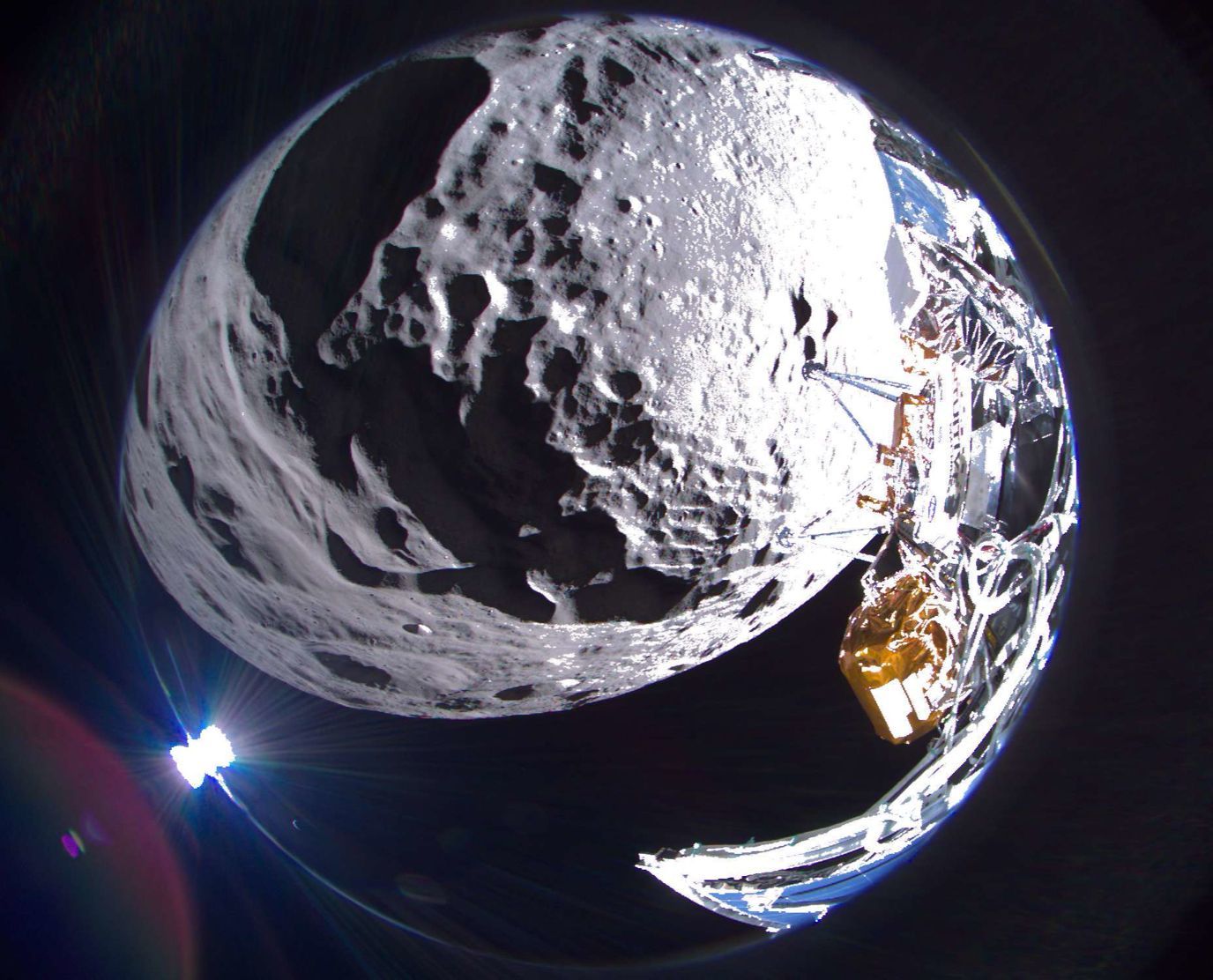
Image from IM-1 decent to the Moon (Intuitive Machines)
As the Intuitive Machines lunar mission draws to a close (for now?), both them and NASA have declared it an “unqualified success”. The Nova-C lander, named “Odysseus”, became the first commercial vehicle to perform a soft landing on the Moon on Thursday, February 11th, raising the curtain on a new era for the lunar economy. In proving the viability of cost-effective private partnerships, Intuitive Machines have set the stage for a growing cadence of commercial lunar missions in the near and long-term future.
NASA contracted the startup under their Commercial Lunar Payloads Services (CLPS) programme, with them paying only $118mn, and announced that they were receiving data from five of their payloads, with a sixth to be activated in the coming months. Furthermore, partnerships under CLPS are playing a key role in overall NASA Artemis programme, eventually returning hums to the Moon and establishing a permanent lunar base.
The mission though wasn’t without its faults. A last-minute glitch caused the lander to descend quicker than they anticipated, forcing it to land sideways, which in-turn reduced its capacity for communications and solar-charging. According to Intuitive Machines, the fault was down to human error, with a safety switch being left unlocked before launch.
Nonetheless, the mission represents a first and a turning point for New Space, with President Biden calling it a "a thrilling step forward in a new era of space exploration.” As well being largely a technical success, helping pave the way for two more IM missions planned for this year, it has gone on to awaken imaginations about the possibilities through New Space, and put the spotlight on the pace and direction the sector is taken through commercialisation. Eyes may now be more focussed on a space industry that it set to be worth $1 trillion by 2030.
And it may not be the end for Odysseus. Although it is not designed to withstand the extreme cold temperatures of the lunar night, engineers will attempt to again make contact when daytime emerges in two weeks.
JAXA lander unexpectedly wakes-up after lunar night
Unexpectedly, the Japanese space agency (JAXA) managed to regain contact with their SLIM lander last Sunday, despite the vehicle not being designed in order to withstand lunar nighttime. Although communication was terminated shortly afterwards, the agency is now looking to employ multi-band spectroscopic camera (MBC), used to analyse the makeup of the lunar surface.
SLIM, or Smart Lander for Investigating Moon, was in-part designed to demonstrate precise landing technology, with the aim of landing within 100 metres of its intended landing zone, rather than previous landers whose landing zones have spanned several kilometres. JAXA achieved a landing within just 55 metres, but did experience experience failure of one of its main engines, resulting in SLIM landing on its nose. They did though also find success with their two rovers LEV-1 and LEV-2, with the latter, a small spherical rover, taking a photo of the lander and sending back to Earth via LEV-2, using inter-robot radio wave data transmission.
Despite encountering some issues, both the SLIM and IM-1 missions have demonstrated new and innovate technologies and models for lunar exploration.
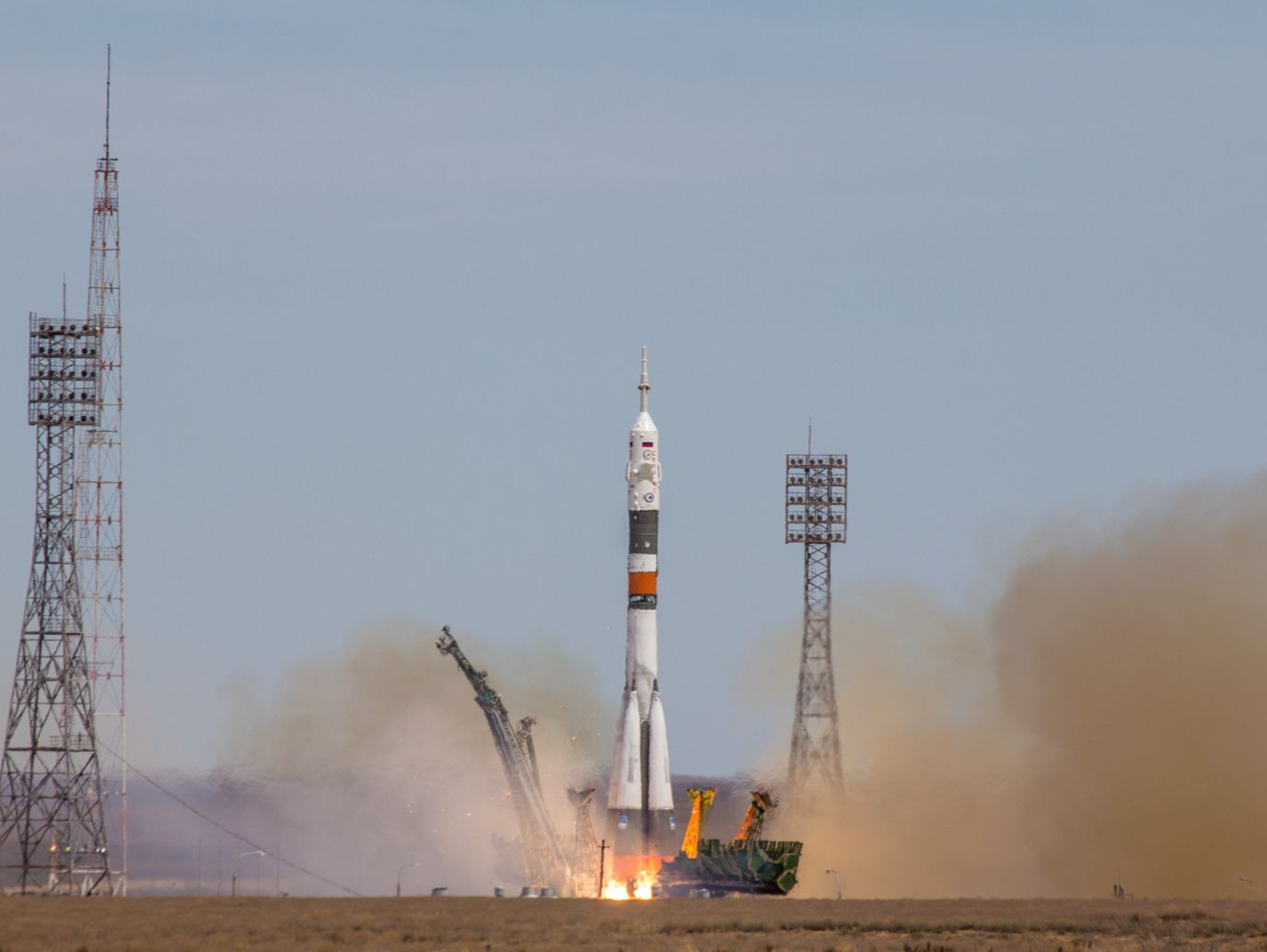
Roscosmos selling-off assets (Image - Adobe)
Putin again rejects weapons claims, China aim to play mediator role while facing coercion accusations
Matters continue to unfold relating to the White House announcement on February 15th that they believe Russia are developing anti-satellite capabilities (ASAT), with some reporting that it may be nuclear-powered, but with full intelligence details yet to be released. Vladimir Putin rejected this accusation, and while speaking at campaign speech on Thursday, he again rebuffed the claims as “some kind of nonsense”.
Putin also demonstrated a visible correlation now being formed between matters of space and geopolitics, stating that while the US and the west support Russian defeat in Ukraine, Russia is unable to engage in discussions on space strategy.
Similarly, the Ukraine war is still seemingly having a continuing degrading effect on Russian space capabilities, with Roscosmos this week announcing they are selling-off non-core assets, after reeling from a loss of 80% of its export income due to western sanctions and loss of international partners.
These warnings and accusations also come at a time when interest is only growing in the booming the new space economy, especially with the light cast from the recent IM, SLIM and Chandrayaan (Indian) missions, and more value being placed on national space strategies.
China again aim to mediate in Ukraine, but will space rivalry dilute impartiality?
Baring this in mind, China has again declared its intention to mediate in Ukraine, with Foreign Ministry Spokesperson Mao Ning saying “Li Hui, the Chinese government’s special representative for Eurasian affairs, will visit Russia, the EU headquarters, Poland, Ukraine, Germany and France starting from March 2 to conduct a second round of shuttle diplomacy to promote a political solution” to the crisis.
China previously detailed a 12-point plan on the ‘Political Settlement of the Ukraine Crisis’, which included ‘respecting the sovereignty of all countries’, ‘ceasing hostilities’ and ‘abandoning the Cold War mentality’. The latter point seems quite apt in the backdrop of accusations from the US regarding potential Russian space-based nuclear weapons. It may then seem plausible that China could be one of the only players who could have the political weight to referee and ending to the war.
However, other than heightened US-China geopolitical and economic tensions, an article from the Washington Times this week highlighted a report from the China Aerospace Studies Institute, revealing that “Chinese military planners consider space weapons easier to use than nuclear weapons and think space weapons could more effectively bully the United States.”
Additionally, speaking before the Senate Armed Services Committee, Gen. Stephen Whiting, commander of U.S. Space Command, has this week warned of a “window of vulnerability” in the coming years to defend space infrastructure from aggressors. Namely, the general said “The PRC’s and Russia’s actions have transformed space into a contested warfighting domain.” Whiting also noted the rapidly goring Chinese intelligence satellite capability, saying they have more than tripled that presence in orbit since 2018.
While China aim to use its role and influence to mediate in Ukraine, it seems that tensions only continue to grow between the US and China in space.
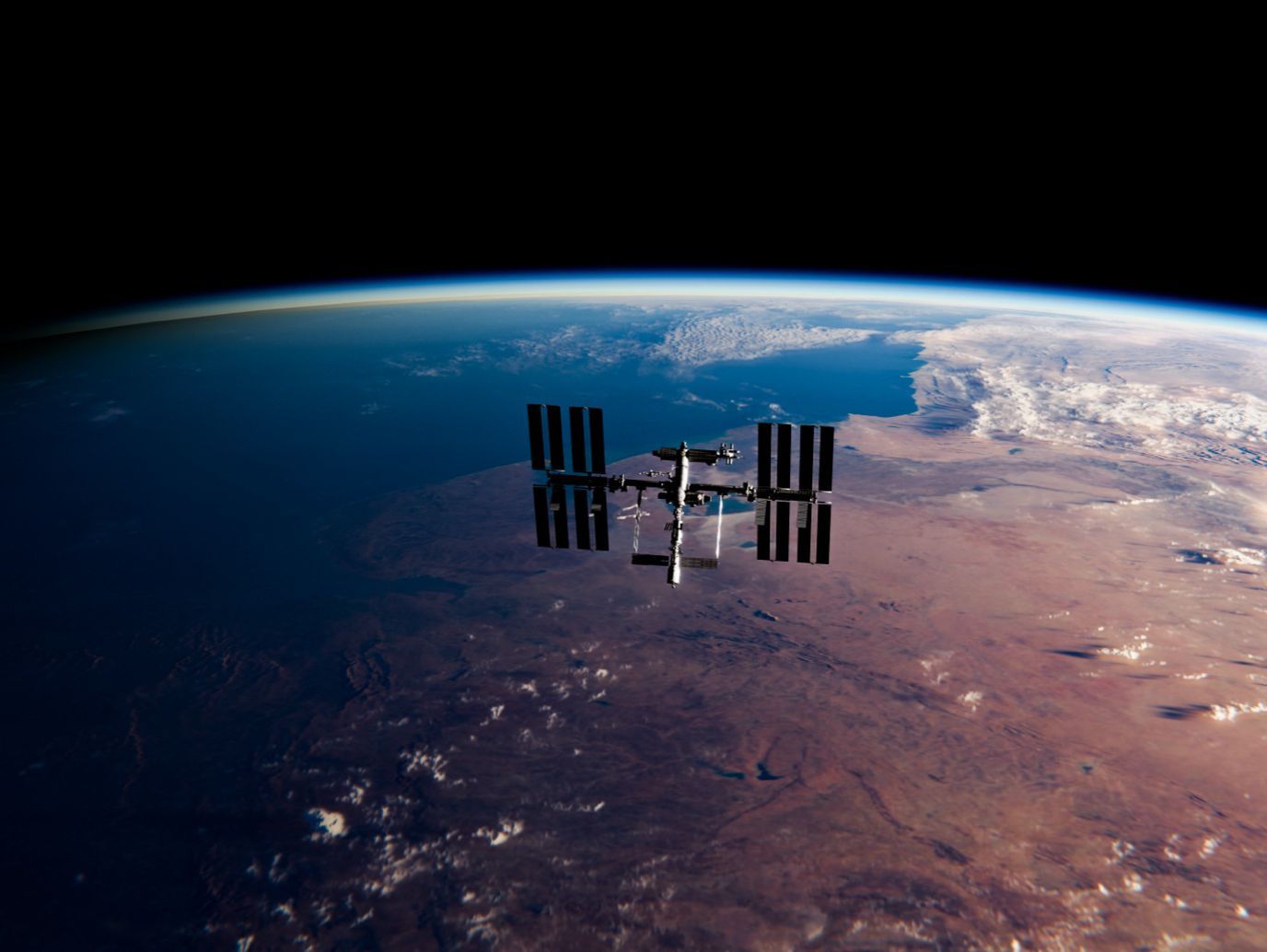
ISS remains a beacon of US-China cooperation (Image - Adobe)
Opinion: Space could lead by example, rather than be the new front of warfare
It seems therefore now almost impossible for geopolitics of Earth and space to be treated separately. Moreover, space is playing an increasingly prominent role in matters of conflict and national defence strategy, with commercial entities such as SpaceX’s Starlink playing an active role in global conflicts.
Only this week a group of US lawmakers accused SpaceX of withholding use of its Starshield defence satellite constellation for US forces in Taiwan, with Musk’s close ties to the PRC being questioned. Whether that be the case or not, what this does demonstrate is the growing reliance that the US, and others such as in Ukraine, have on commercial entities such as SpaceX.
The value of space is rapidly growing, for commercial application and also defence, as seen this week in the flurry of excitement surrounding the IM-1 mission, and the warnings and skepticism regarding a potential arms race in orbit.
While it may seem that a conflict in space may seem to come extent inevitable, there is also the possibility that space exploration offers the chance to build bridges through cooperative missions, such as the ongoing US-Russian partnership on ISS and the Chinese-ESA partnership on the Chang’e-6 lunar mission.
Based on the principles of peaceful uses of outer space, enshrined in the Outer Space Treaty, cooperation in space has the chance to lead by example.
Share this article
External Links
This Week
News articles posted here are not property of ANASDA GmbH and belong to their respected owners. Postings here are external links only.









